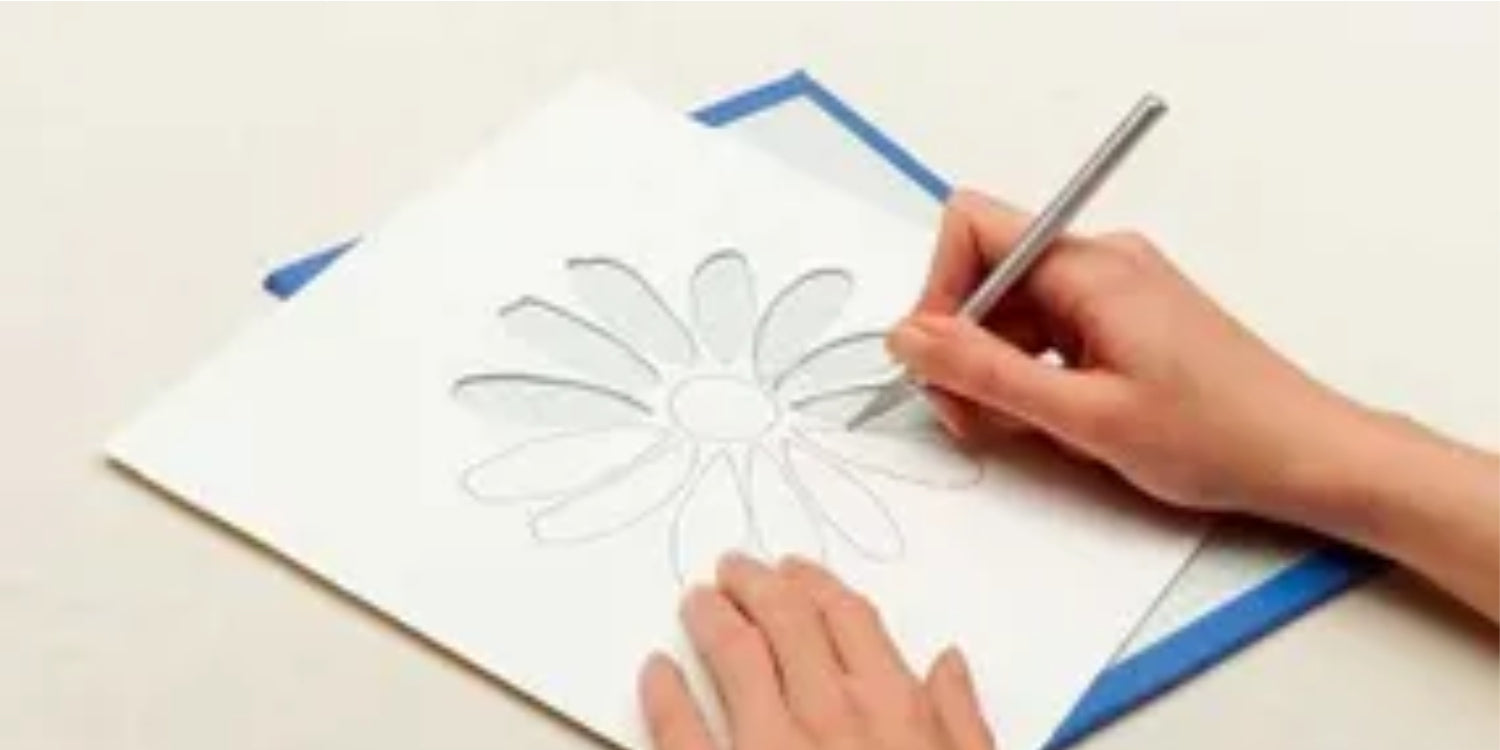Even though you may be quite good at drawing you will still need to learn how to draw a stencil, not as easy as you think and cut it out, even harder.
- One major difficulty with all stencils is the isolated parts of a design, such as the center of the zero, which will fall out as soon as the outer ring is cut.

- To overcome this we use bridges which join the inner circle to the outer.

When choosing a design to cut out or drawing your own, make sure you have enough bridges so center pieces don't fall out when you start cutting. If you do make a mistake you can always stick the missing piece back in using glue and strands of hair, just like the ancient Japanese did, see The History of Stenciling
Stencil Cutting Equipment
- Oiled Stencil Board or Acetate/Mylar
- Soft Pencil or Felt-tip/Technical Drawing Pen
- Craft Knife or Electric Stencil Cutter
- Cutting Mat for Craft Knife
- Plate Glass for Electric Stencil Cutter (sand or tape edges)
- Carbon Paper
- Masking Tape
- Ruler and Eraser
Tracing the Stencil Design
Cut a piece of board or acetate big enough to allow a 5cm (2in) border all round your stencil design.
Stencil Board: Place the stencil pattern in the middle of the board with a sheet of carbon paper under it and tape to the stencil board. Trace over the outline with a soft pencil; if you cannot see the outline clearly go over it again.
Stencil Film/Acetate: Place the design under the acetate and tape both to the cutting mat or glass plate. Trace the stencil pattern onto the acetate using a felt-tip or technical drawing pen (be careful the felt-tip smudges).
Cutting the Stencil
Once the stencil pattern has been traced onto the stencil material you are ready to cut. Hold the craft knife or stencil cutter like a pen; rest the heel of your hand on the cutting surface (cutting mat or plate glass) and cut towards yourself. If you are cutting a long straight line you may cut away from yourself but use your ruler to help.
Craft Knife: Always cut a stencil on a proper cutting mat using only your fingers to move the knife and at the same time use your other hand to move the stencil so that you are constantly cutting towards yourself. Push the point of the blade through the stencil board or acetate and then flatten it out, in that way you will use the whole blade. Don't remove the knife until the whole shape has been cut out. When you reach a corner or sharp point lift the heel of your hand and move the stencil around, do not remove the knife.
Electric Stencil Cutter: This handy little tool takes most of the hard work out of stencil cutting; it does however take a bit of getting used to. The electric cutter uses heat to melt the stencil film/acetate (you can't use it on board). Use the plate glass, not the cutting mat or you will melt that too. If you leave it in one place for too long you could end up with ridges around your stencil window, so keep it moving or lift it off the stencil. All you do is trace the design with the tip of the cutter remembering to lift the tip when rotating on a corner. Don't hold it in place like you did with your knife, or you will end up with a much larger hole than you wanted or needed.
Tips and Problems
Nearly all border stencils have a repeat, some are built into the design but some need to be specially cut. To make sure you have an exact match and the patterns join up properly, leave about 5cm (2in) extra board or acetate at the end of your stencil. Loop the stencil into a circle and overlap the cut and uncut ends then fix in place with masking tape. Using a pencil or felt-tip outline the open windows of the cut end onto the uncut end. Remove the masking tape and cut out the design you have just drawn, you now have a stencil that matches up perfectly.
If you have cut through a bridge or missed a line, if the stencil board has ragged edges (never happens with acetate) or you just don't like the shape of a design, all you have to do is stick masking (painters) tape onto both sides of the problem area and re-cut it.

